How to beat Goliath
Because size doesn’t matter
I have formulated 6 rules which I call David’s rules. These are for anyone facing the big one ...
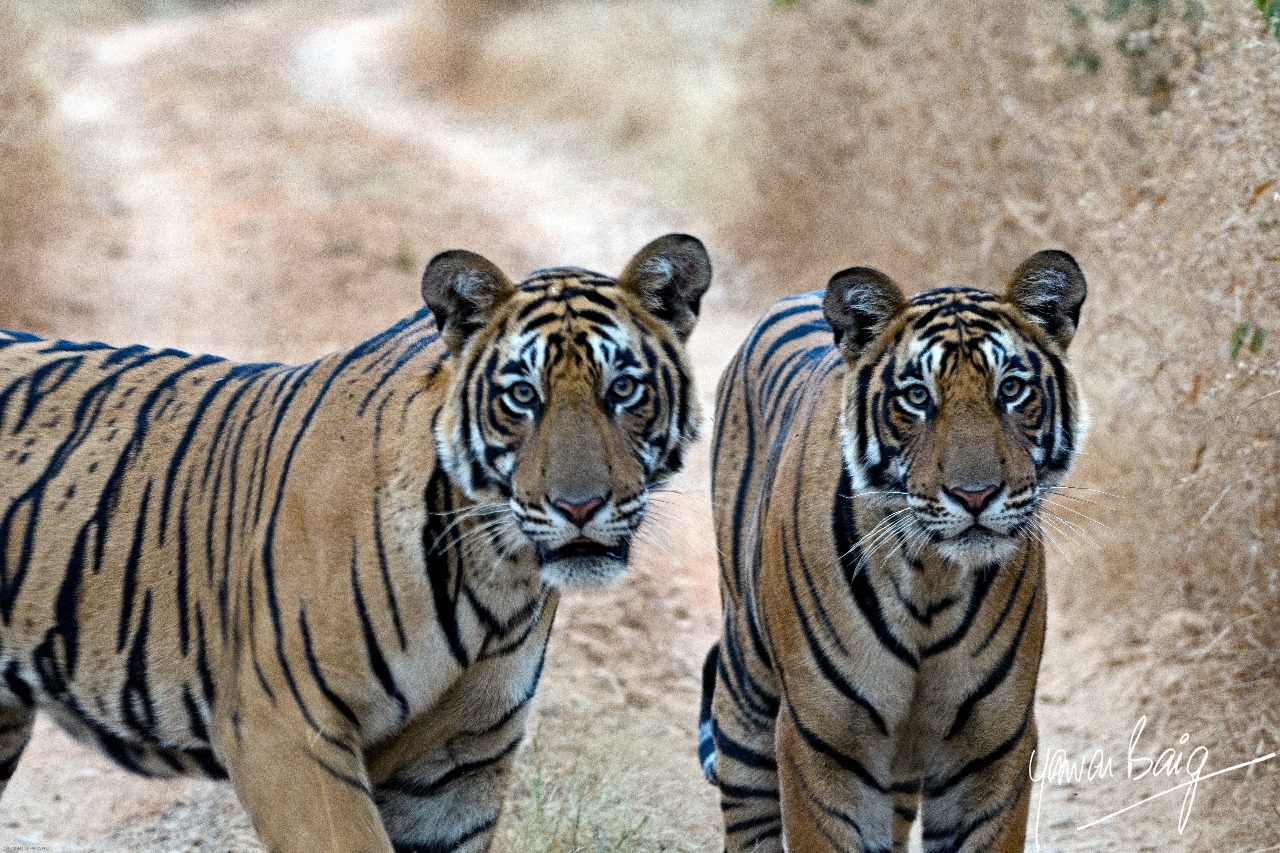
They are perhaps eighteen months old, bigger than the biggest leopard, yet vulnerable and in danger, when apart from their mother. Their mother, Ranthambore’s T-19 Krishna, like all tiger mothers, knows that raising young is a full-time job and Alexa can’t do it. Tiger cubs are born blind, the size of a house cat, totally helpless in every way. Krishna had three in this litter, two males and one female. The tigress nurses them and guards them with her life, if necessary. At birth they are prey to every carnivore in the forest, from eagles, barn owls and jackals to hyenas and leopards. But even when they have grown from their infancy they are still prey to leopards and to their own father and any tigers in the area. Tigers kill cubs so that the mother comes into oestrus (gets ready to breed) which she won’t do if she has cubs to rear. Cubs take up to two years to reach maturity and be able to hunt and survive on their own.
Leopards actively hunt tiger cubs, because one less in the world is one extra guarantee of survival for the leopard. Competition between the two apex predators is literally a matter of life and death. Full grown tigers are of course way beyond a leopard’s ability to delete but not cubs, even what we call sub-adults. The reason is not size but strength and fighting ability. Tiger cubs are no match for a leopard which is, pound for pound, the strongest cat in the world.
Tigers learn to hunt from their mothers. The mother nurses them until they can eat meat. This means that she must hunt almost daily to maintain her own strength and ability to lactate. Three cubs means greater chances of survival of the species but also much more work for the mother. All the while she must make sure that they are safe, when she leaves them to hunt. To this end, she moves them from one location to another as soon as she senses any danger to them. When they are weaned, she must hunt even more to feed herself and them. Depending on what animal she kills and where the kill is, she may either bring the kill to them or lead them to the kill. Once they have eaten, she leads them to water because now that they are not nursing, they need to drink often.
Then comes the most critical part, to teach them to hunt. Tigers (all carnivores actually) are not born hunters. Cubs learn to hunt from their mothers. Since tigers are solitary creatures, the mother, unlike a lioness in a pride, has no help. She must do everything. She starts by tackling smaller game and disabling it, so that the cubs can get the experience of bringing it down. They need to know which end is dangerous because their real prey is potentially lethal if not handled properly. One kick or butt from a Gaur or Sambhar can cause injuries which can disable or kill a tiger. The tiger needs to kill effectively and fast if it is to survive.
Even more important is the stalking. All tiger prey is faster than the tiger and with a head start it can easily escape. After all its motivation is greater than that of the tiger. That is why a tiger’s kill-rate is one in six or seven. If the hunt is to be successful from the point of view of the tiger, then it must get as close to the prey as possible undetected, so that the final burst of speed and power that its hind-legs can unleash is enough to reach the prey before it gets out of reach. But between sighting its prey and the final charge is every dry leaf, every stick, every stone, every errant eddy of breeze that can alert the prey to the mortal danger that it is in. Then the tiger must know where to bite to disable if not outright, kill the animal. All this takes time and lots of practice and lots of potential danger. That is when we met the Twins.
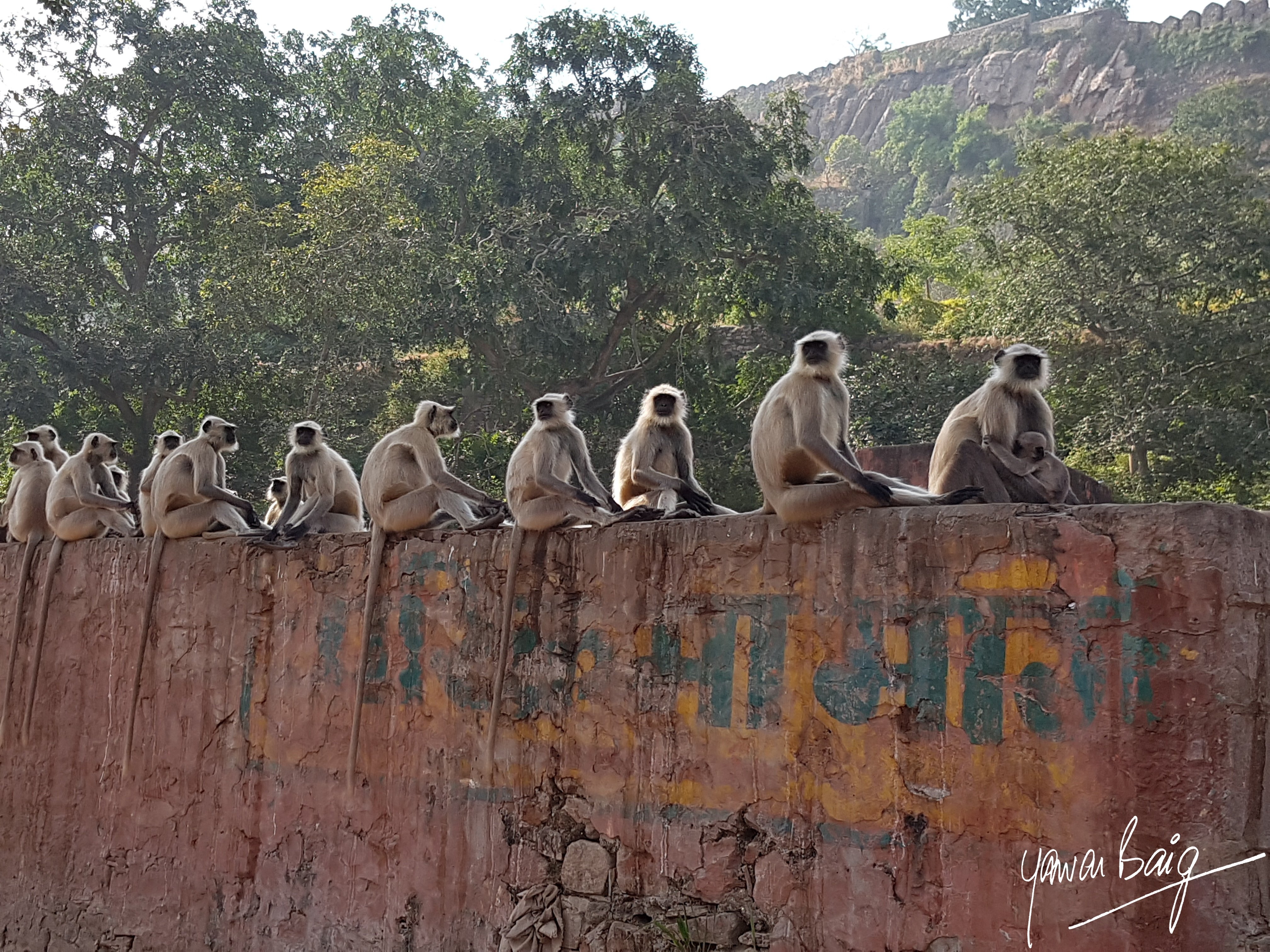 Our track took us to the foot of Ranthambore fort at the top of which is a temple which is very popular with the locals. Droves of them come in all kinds of vehicles, packed to overflowing with some people sticking on purely by defying centrifugal forces. Music blares, people scream to be heard over the sound of music, boisterous, joyful and hugely disturbing to the wild environment into which they bash on without a care in the world. The fact that they are ‘pilgrims’ means that they are beyond reproach, and nobody says a word to them, even about appropriate behavior in the wild. To add to this is the trash they bring and spread about generously. Plastic packets of potato chips with lots of salt still in them after the chips have gone. Tetra packs of fruit juice with traces of sweetness in the pack after it is thrown away. Cigarette packs, plastic bottles and other unspeakable things which I was not willing to go close enough to identify. Everything strewn along the track to the temple and then thanks to wind, water and curious animals, finds its way into places you wouldn’t imagine. Awaiting the pilgrims are troops of Langurs, far better behaved than the humans, expecting to be fed. And sure enough they are. In addition, they pick up and carry the garbage that people have thrown away and carry it into the forest. Both feeding wild animals and throwing garbage is illegal, but who cares!
Our track took us to the foot of Ranthambore fort at the top of which is a temple which is very popular with the locals. Droves of them come in all kinds of vehicles, packed to overflowing with some people sticking on purely by defying centrifugal forces. Music blares, people scream to be heard over the sound of music, boisterous, joyful and hugely disturbing to the wild environment into which they bash on without a care in the world. The fact that they are ‘pilgrims’ means that they are beyond reproach, and nobody says a word to them, even about appropriate behavior in the wild. To add to this is the trash they bring and spread about generously. Plastic packets of potato chips with lots of salt still in them after the chips have gone. Tetra packs of fruit juice with traces of sweetness in the pack after it is thrown away. Cigarette packs, plastic bottles and other unspeakable things which I was not willing to go close enough to identify. Everything strewn along the track to the temple and then thanks to wind, water and curious animals, finds its way into places you wouldn’t imagine. Awaiting the pilgrims are troops of Langurs, far better behaved than the humans, expecting to be fed. And sure enough they are. In addition, they pick up and carry the garbage that people have thrown away and carry it into the forest. Both feeding wild animals and throwing garbage is illegal, but who cares!
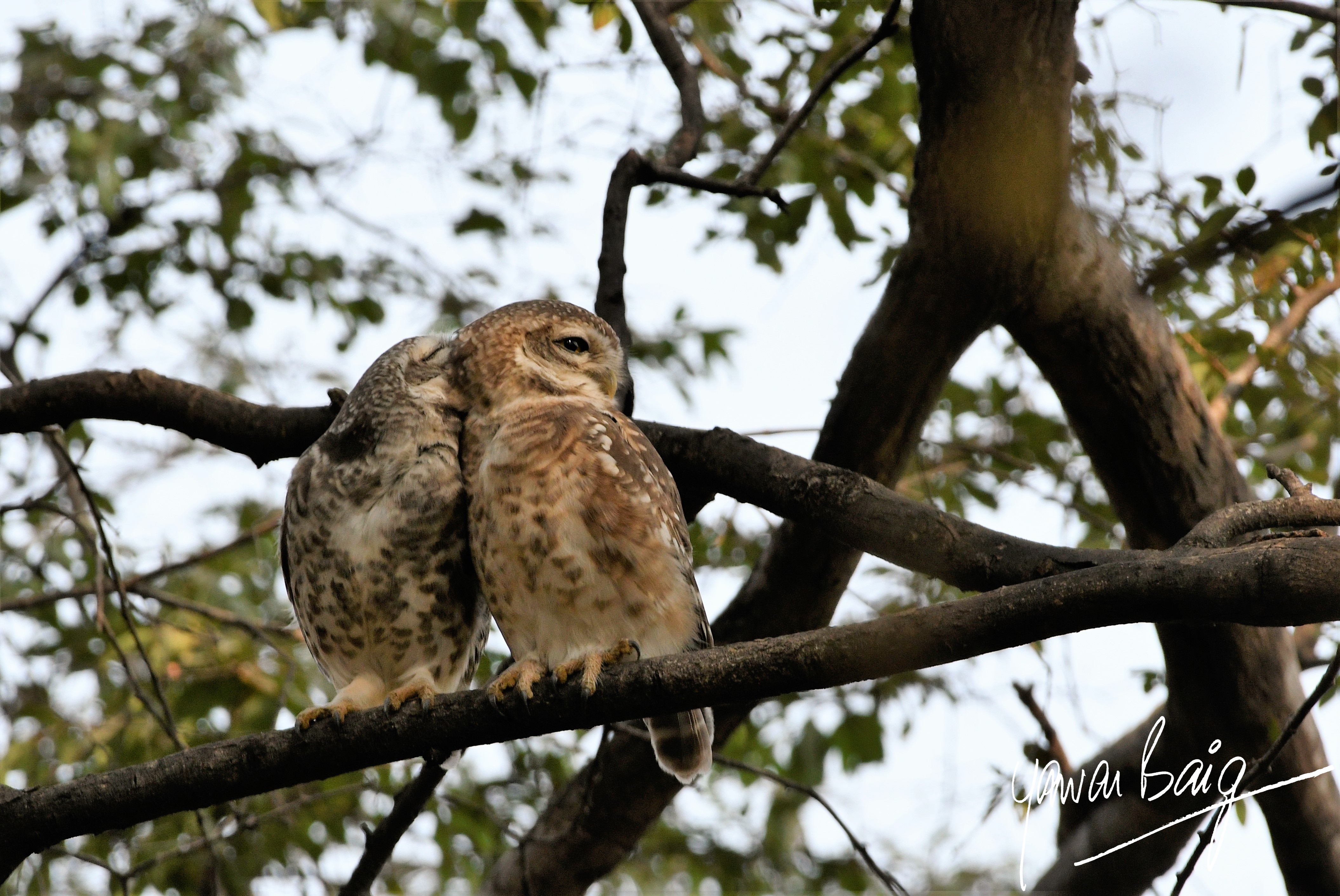 We entered the forest through the ancient gate to the fort and drove down a track which took us to another gateway which has now been framed by the aerial roots of one of the ever-present banyans of Ranthambore. The track goes along the side of Padam Talao on which is Jogi Mahal. More about that later. The track then traverses deciduous forest with a lot of Keekar and Babul (Acacia) trees with very convenient hollows in their trunks for Spotted Owlets. There were two, bobbing their heads, looking at us. Then when they decided that we meant no harm, they continued with their courtship activity of bill clasping and scratching each other’s necks and sitting with their heads together in a most endearing posture. I love watching them and given that they are quite common, I am never disappointed.
We entered the forest through the ancient gate to the fort and drove down a track which took us to another gateway which has now been framed by the aerial roots of one of the ever-present banyans of Ranthambore. The track goes along the side of Padam Talao on which is Jogi Mahal. More about that later. The track then traverses deciduous forest with a lot of Keekar and Babul (Acacia) trees with very convenient hollows in their trunks for Spotted Owlets. There were two, bobbing their heads, looking at us. Then when they decided that we meant no harm, they continued with their courtship activity of bill clasping and scratching each other’s necks and sitting with their heads together in a most endearing posture. I love watching them and given that they are quite common, I am never disappointed.
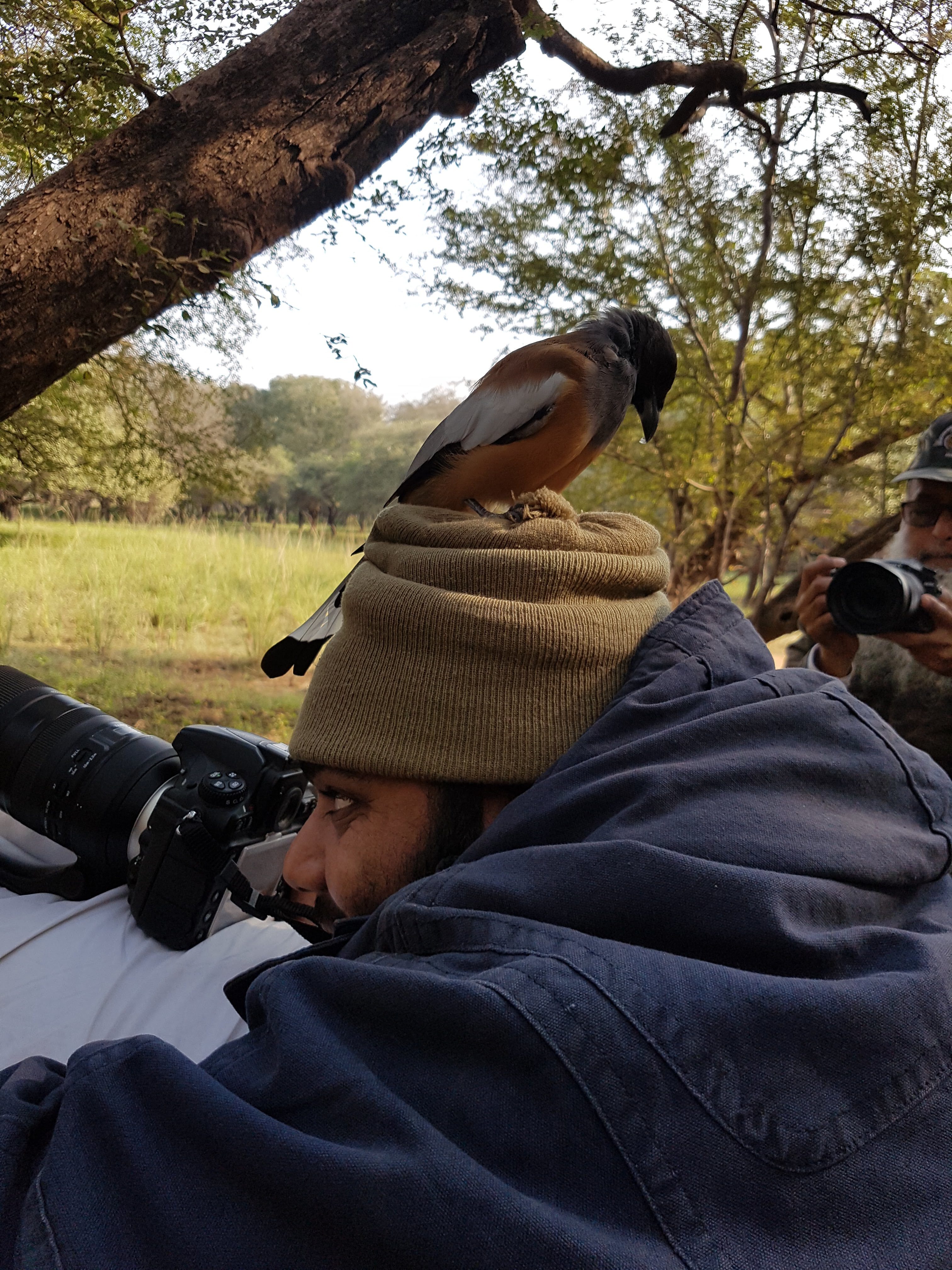
As my friend Sony Khan and I were photographing the owlets, a Rufous Treepie decided to investigate. First, he perched on a convenient branch and then decided he needed to take a closer look at Sonu and landed on his head. Treepies are precocious and highly inquisitive and are a delight to watch. One landed on my hand to try to eat some roti that I was eating. Mind you, these are wild birds. It is just their nature.
We continued up the track which took us to a highland. It seems to be really sheet-rock covered with a thin layer of soil on which is a mini grassland. The grass has already dried as the soil has little capacity to hold water and is a uniform yellow-brown, ideally suited to hide a tiger or leopard. On the fringe of this mini grassland is a thick stand of evergreens with heavy undergrowth. As we topped a slight rise, we saw them. Not the tigers but a long line of Gypsy and Mitsubishi Canter safari vehicles, parked bumper to bumper, engines idling, spewing diesel fumes; filled to capacity with tourists, all standing up, craning their necks, shouting advice to each other and pointing frantically at something in the undergrowth. This description, nasty as it is, is not unique to any of our national parks but common to all of them. What it does to wildlife is not difficult to imagine. Especially to a solitary animal like the tiger.
We parked behind the last vehicle and with careful observation, I suddenly saw the head of one of the twins. He was sitting in the grass at the edge of the trees, about ten meters from the road, completely ignoring the din created by the monkeys; sorry, people. It is amazing how beautifully the tiger’s coat camouflages him in his environment of grass, trees, dappled sunlight and shade. It makes him totally invisible as long as he remains still. When he is stalking it is as if he is carved from rock. As it was in this case, this cub was simply waiting to be allowed to cross the road to go to the river which is at the bottom of the hill. But that was impossible with the entire road blocked with vehicles filled with screaming monkeys; sorry, people. To top it all, when the cub stood up and walked a little way to try to get around the obstacle, the obstacle moved with him to block him again. I realize that people were not trying to block him from the water, but in their enthusiasm to take photos with cell phone cameras combined with their ignorance about the wild in general and tigers in particular as well a total disregard and disrespect for both, they didn’t care what happened to the tiger. As it was, his mother, Krishna had made a kill that morning and the cubs had eaten. Now they needed to get to the river to drink. It was about 9.00 am at this time. They would have been very thirsty but there was nothing they could do. What amazed me is that every single vehicle had a Forest Guard in it. Yet not one of them attempted to at least give a gap in the barricade for the tiger cub to pass. All that we could do was to sit and watch and curse in frustration. Eventually at about 9.30 am the vehicles started to move as they had to leave the park at that time after the morning drive. Since we were last in, we had a few minutes and so I was able to get this wonderful photo of the twins.
Tiger tourism is a mixed blessing in India. I say mixed, but it is greatly abused. Parks need tourists and the income they represent. Shutting them out is not the answer. However, there will be nothing to see if the forest and its wildlife is not respected and gets destroyed thanks to people’s abuse and uncaring attitudes. Most tourists think of wildlife sanctuaries as a place of entertainment. They go there to have fun. Not to see anything, except the tiger. Vehicle drivers and guides respond to this pressure and drive at breakneck speed from one ‘Tiger Show’ to another. Believe me, that is what it is actually called. The drive is a test of the Maruti Gypsy and your backbone. Mine has survived to date but after every foray into a national park, I take a week to recover. You may ask why I allow my vehicle to drive fast? The answer is because I am not alone in it. When I have people, who share my love for the forest with me, as was the case on this trip to Ranthambore, we do try to stop for birds and other creatures or even simply to look at the magnificent views from different vantage points. But otherwise, it is one mad race. It is a mark of the skill of the drivers that there are no instances of a Gypsy wrapped around a tree or two smashed together. But that is only a matter of time.
So, what needs to be done?
Education and Law Enforcement. Tourists must be educated about the etiquette they must observe in the forest which starts with silence. They must be taught to appreciate the whole forest and all its inhabitants. They must understand the relationship between the grass and shrubs, trees and herbivores, carnivores and apex predators. They must realize that the health of the tiger represents the health of the entire ecosystem. They must understand how they come into the picture to add to it or to destroy it. No tourist must enter the forest until they have attended a talk on all these aspects. After this, rules must be strictly enforced. The key people on whom the rules must be enforced are vehicle drivers and guides who must stand to lose their license to operate their vehicles in addition to heavy fines. That will motivate them to ensure that their passengers maintain decorum and don’t give in to their demands and drive fast and behave in other destructive ways.

On our return we had breakfast in Jogi Mahal. The Field Director had kindly granted us permission for this without which it is not possible to go there. This is because the beautiful building is in a state of grave disrepair. It has structural damage due to soil shifting its foundation and is likely to collapse if it is not attended to urgently. If that happens it will be a great loss of a beautiful heritage building and a piece of history of Rajasthan. To sit on the deck and watch the activity on the lake is an incredible experience. I can only imagine the experience of watching a sunrise and sunset from this place but that will mean staying here overnight. While I am willing to camp out in the veranda of the pavilion, I am not sure whether I will be permitted to do so. If that happens, then the photos we can take will be mind-blowing.
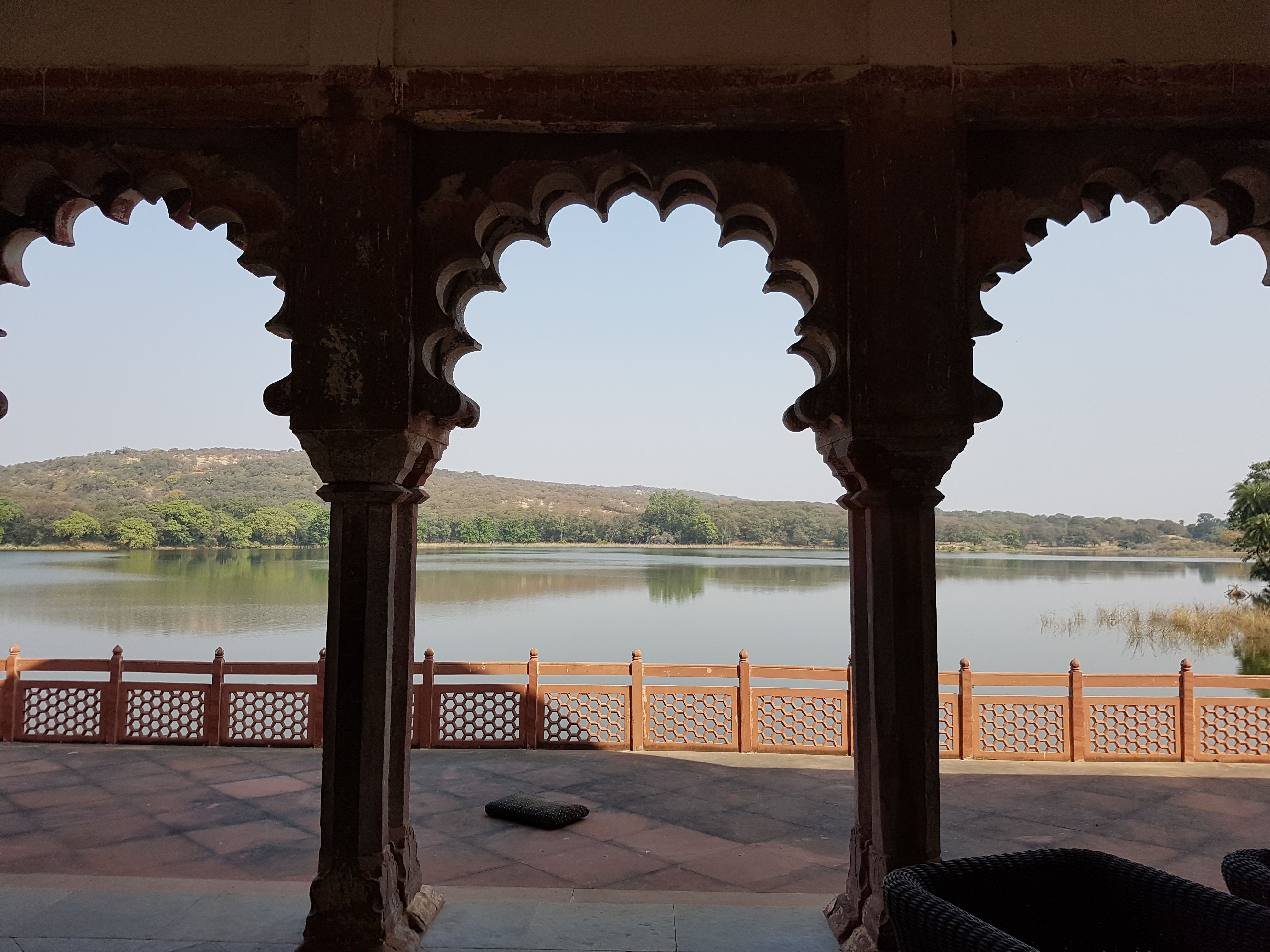
You enter Jogi Mahal from the back past an ancient banyan tree with its multiple trunks. An amazing sight in itself. You walk through a short passage to the front which is literally on the lake, Padam Talao. The lake has crocodiles and large turtles, whose ripples you can see as they sense your presence. The edges of the lake are great potential sighting points for herbivores and carnivores who come to drink and hunt. All you need to do is to sit on the deck with a pair of binoculars and enjoy the sights. A Greater Cormorant was hard at work trying to catch fish but with little success. Since there are a lot of fish in the lake, easily visible in the clear waters, I wonder why he couldn’t catch any while we were there. There is the ever-present Rufous Treepie, a youngster, curious and bold, making a racket that is hard to believe, as he tries very hard to get us to feed him. Sadly, for him, he is not successful.
Back to the gate where the Langur troop has now dispersed since the pilgrims have also left. We count our blessings, beautiful forest, amazing tigers, fabulous scenery, bold Treepies, breakfast in a piece of history and weigh them against the irritants, screaming tourists and feel that we still came out on top. Until next time then. Cheers!
Please log in to leave a comment
Loading comments...
I have formulated 6 rules which I call David’s rules. These are for anyone facing the big one ...

One of my friends who comes from ...
I have said this a million times, if I have said it once – the three crimes committed on society with society’s blessing are: Commerci...